Technology
Filter technology.

360° sealed filtration – removes gases and particulates.
The fully-sealed filter system combines an activated Carbon filter to remove gases, and a Glass HEPA filter that captures 99.95% of microscopic allergens and pollutants as small as 0.1 microns.¹
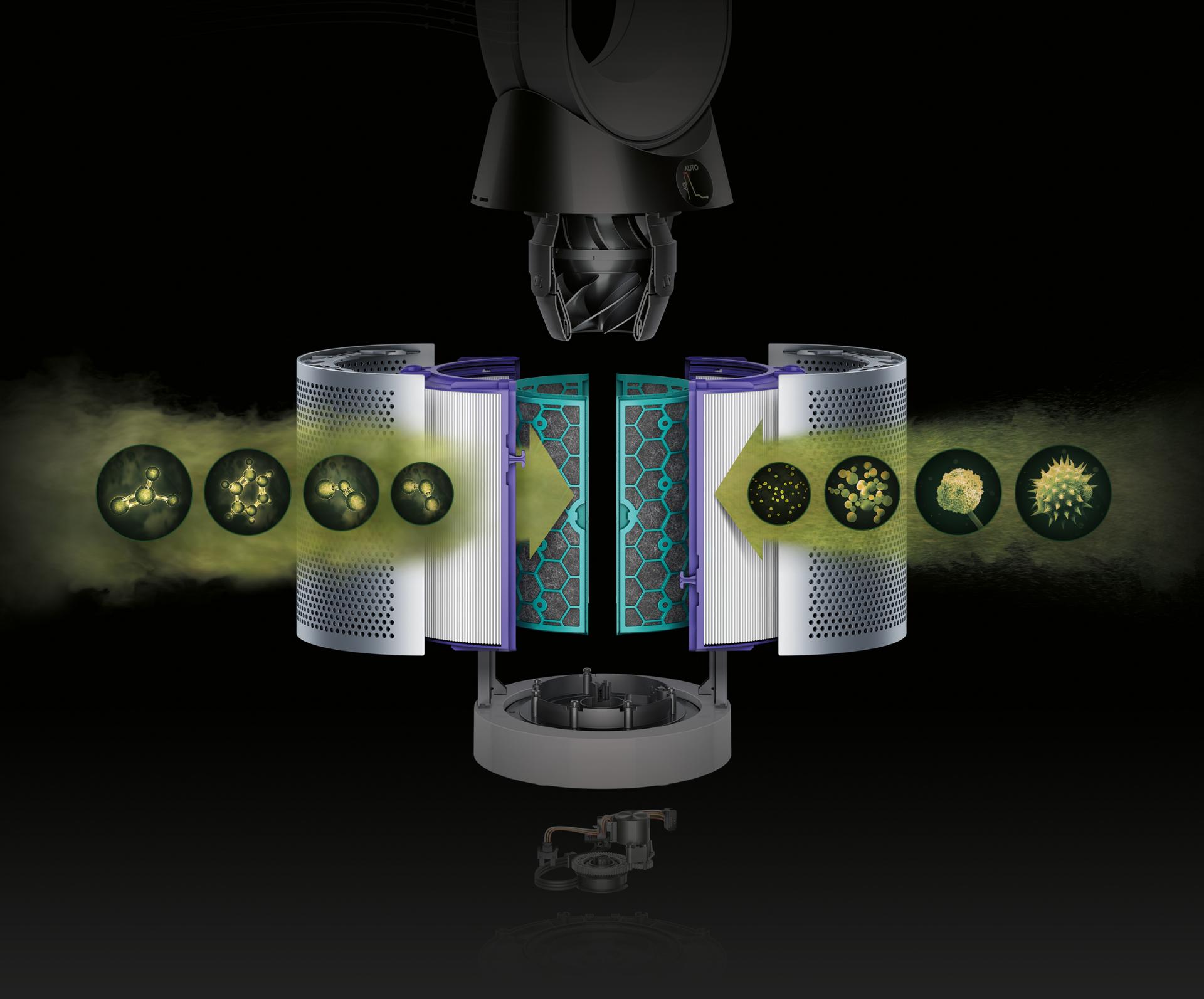
Glass HEPA filter.
9 metres of borosilicate microfibres, pleated over 238 times, to capture 99.95% of harmful ultrafine particles.¹
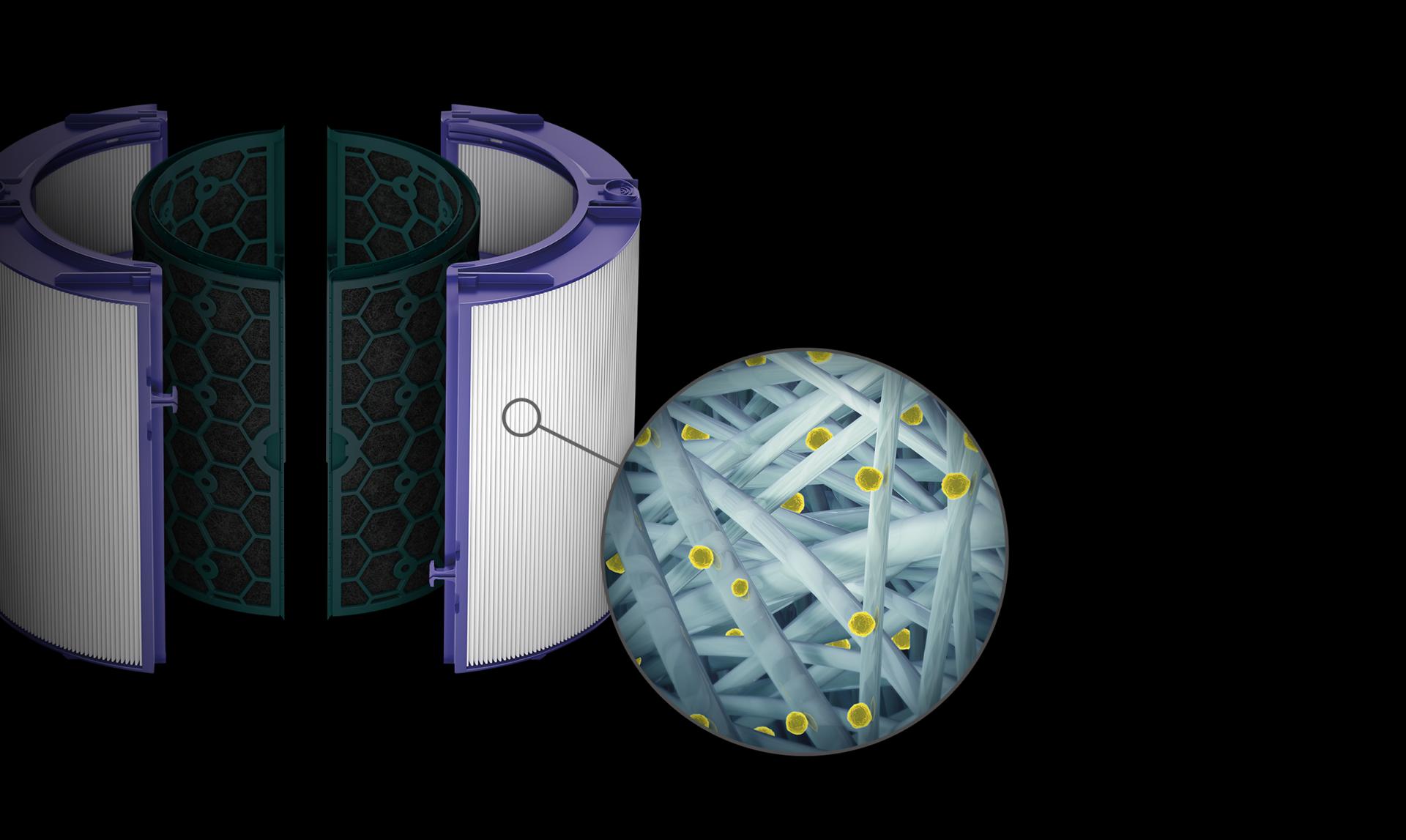
Activated Carbon filter.
Tris impregnated carbon granules capture gases such as formaldehyde, benzene and nitrogen dioxide.¹
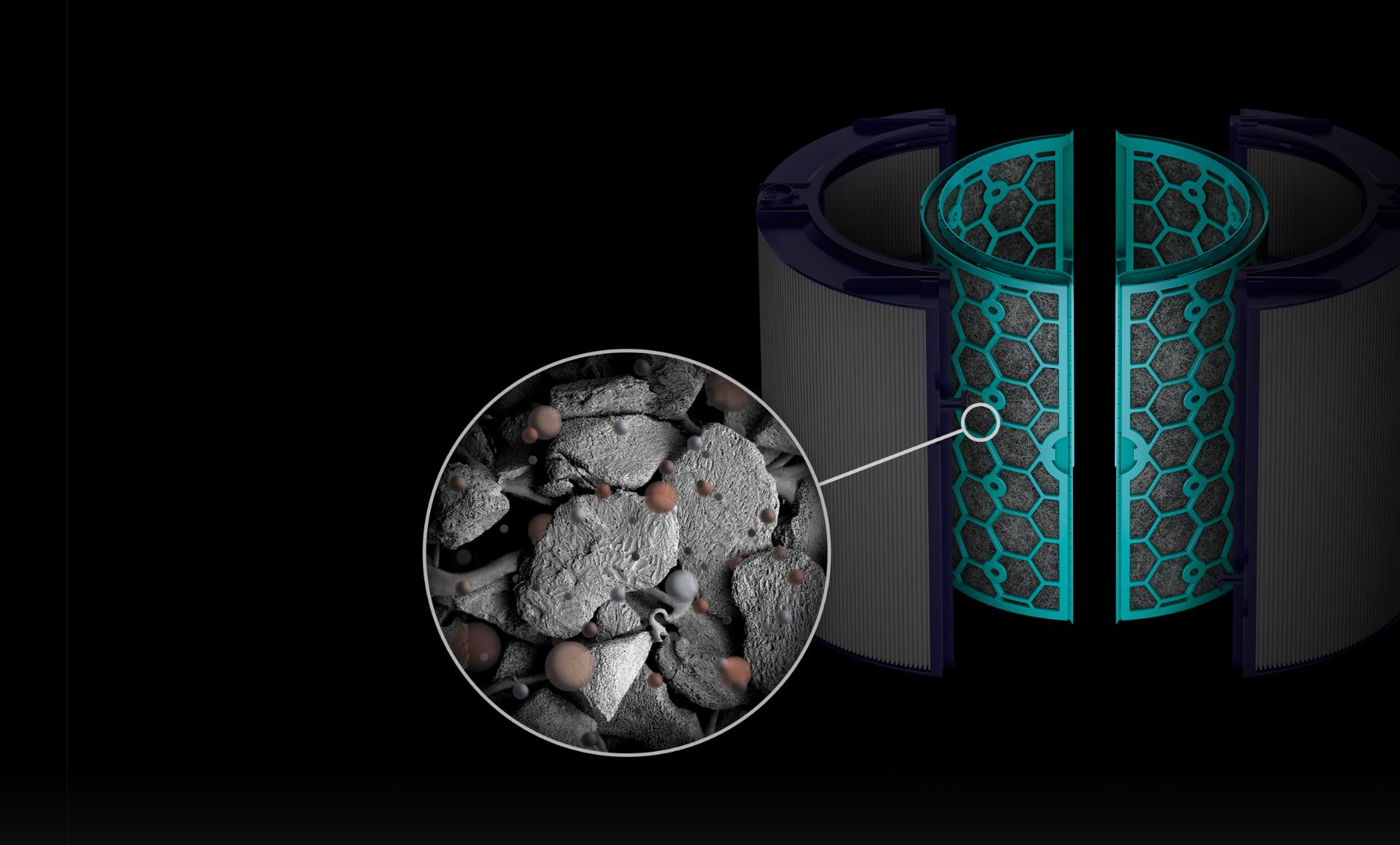
Pollutants include:
Using a unique algorithm, the Dyson Pure Cool™ air purifier processes the input from three sensors to continually monitor the room air quality.
It uses this information to activate the machine and keep room pollution levels low.
Particulate sensor
Uses laser measurement for constant particulate concentration analysis.
Detects Volatile Organic Compounds (VOCs) and oxidising gases such as NO2. Humidity and temperature sensor
Constantly monitors the relative humidity and temperature levels within the room.
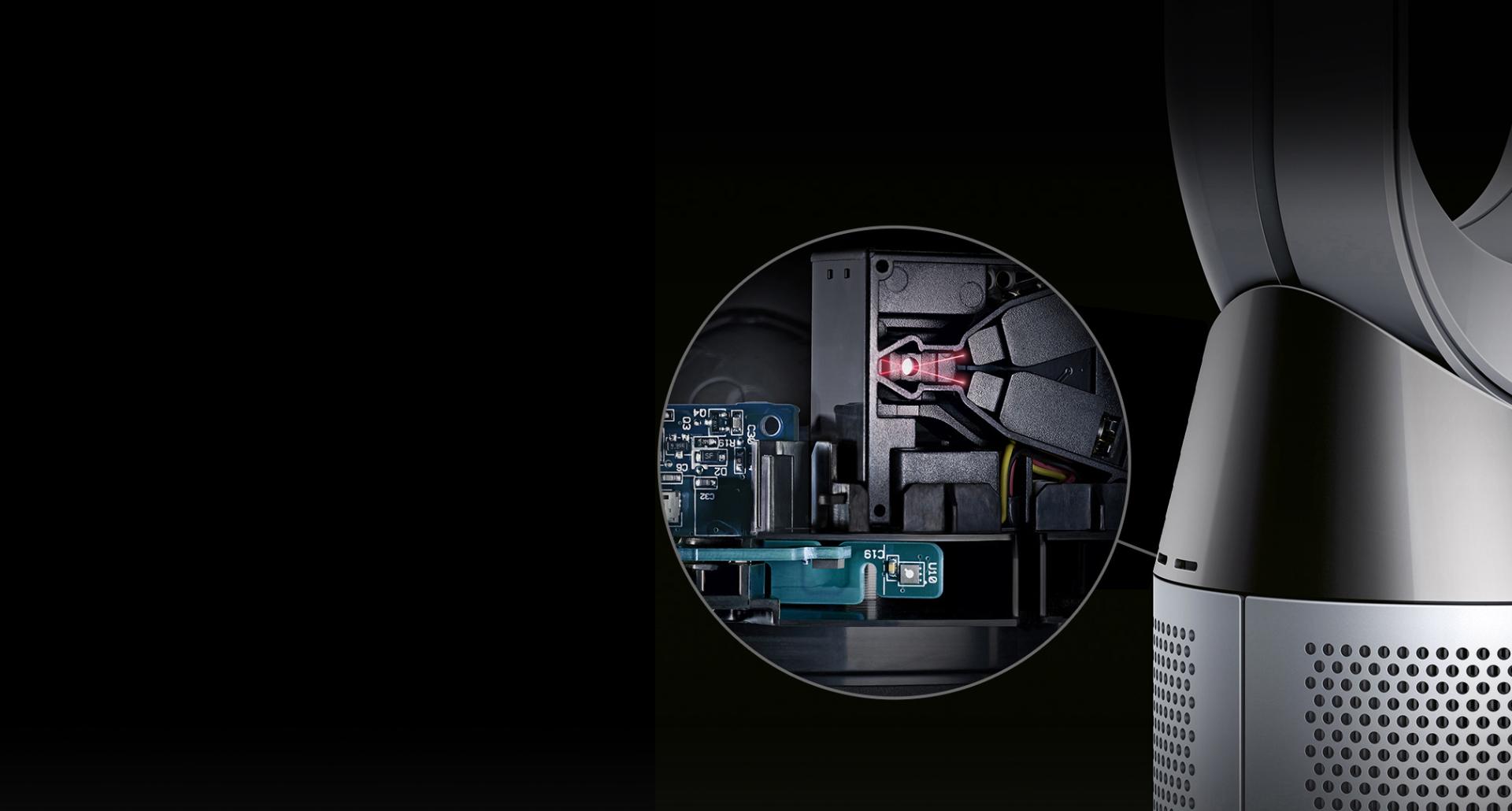
Powerful Air Multiplier™ technology.
Air Multiplier™ technology delivers over 290 litres per second of smooth, yet powerful airflow – circulating purified air throughout the whole room.²
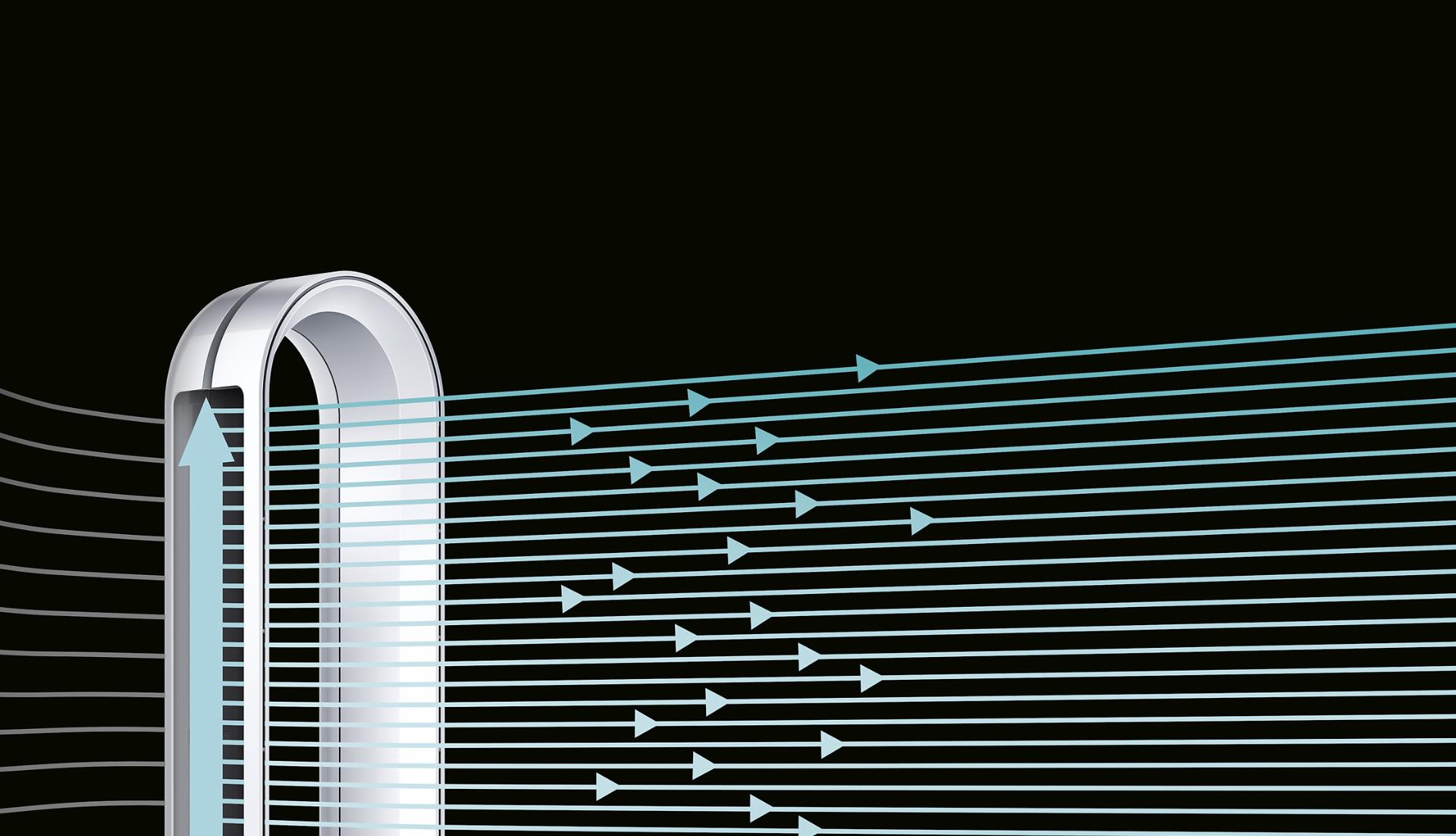
Two airflow modes.
An air valve mechanism is driven by a brushless stepper motor, to allow remote actuation and switching between Diffused mode and Fan mode. The stepper motor drives a pinion gear, which turns a rotational baffle driver around the arc of the amplifier. Angled slots in the baffle driver move the baffle forwards and backwards.
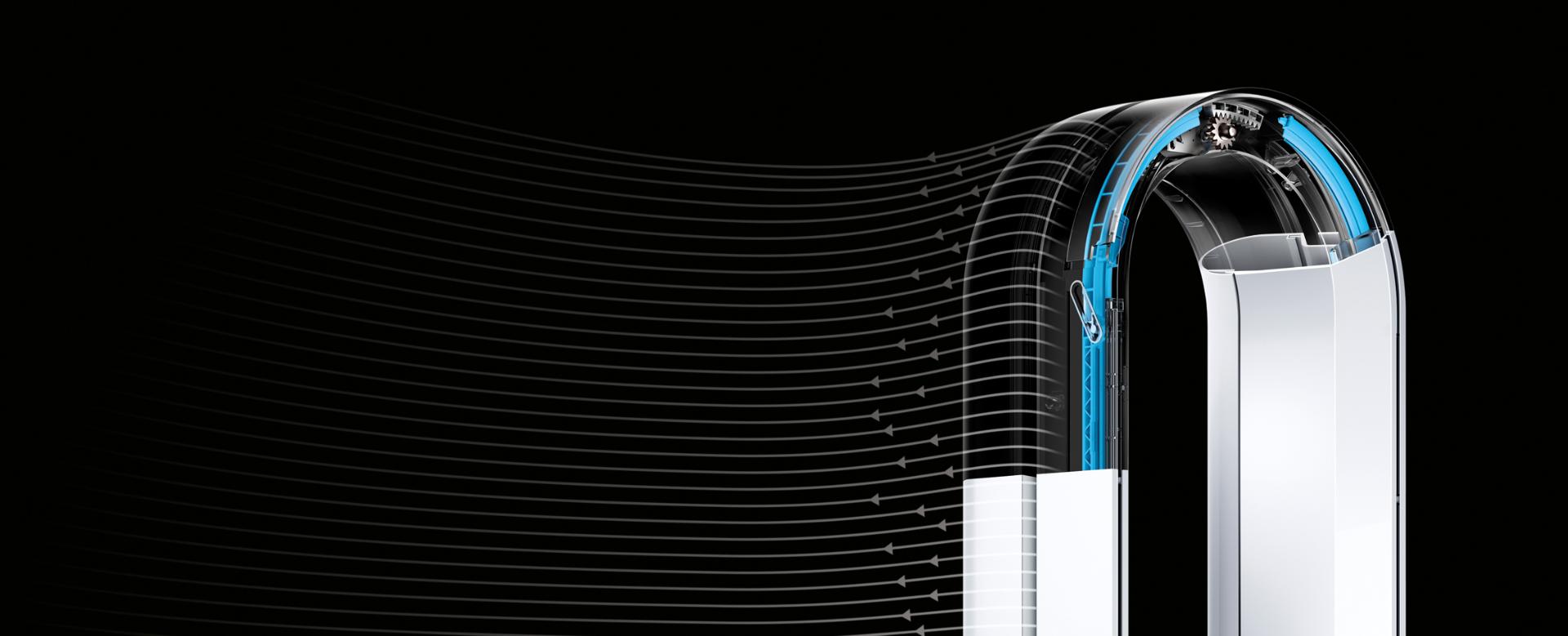
Forward projection
The baffle stays in plays to deliver a forward powerful stream of purified air.
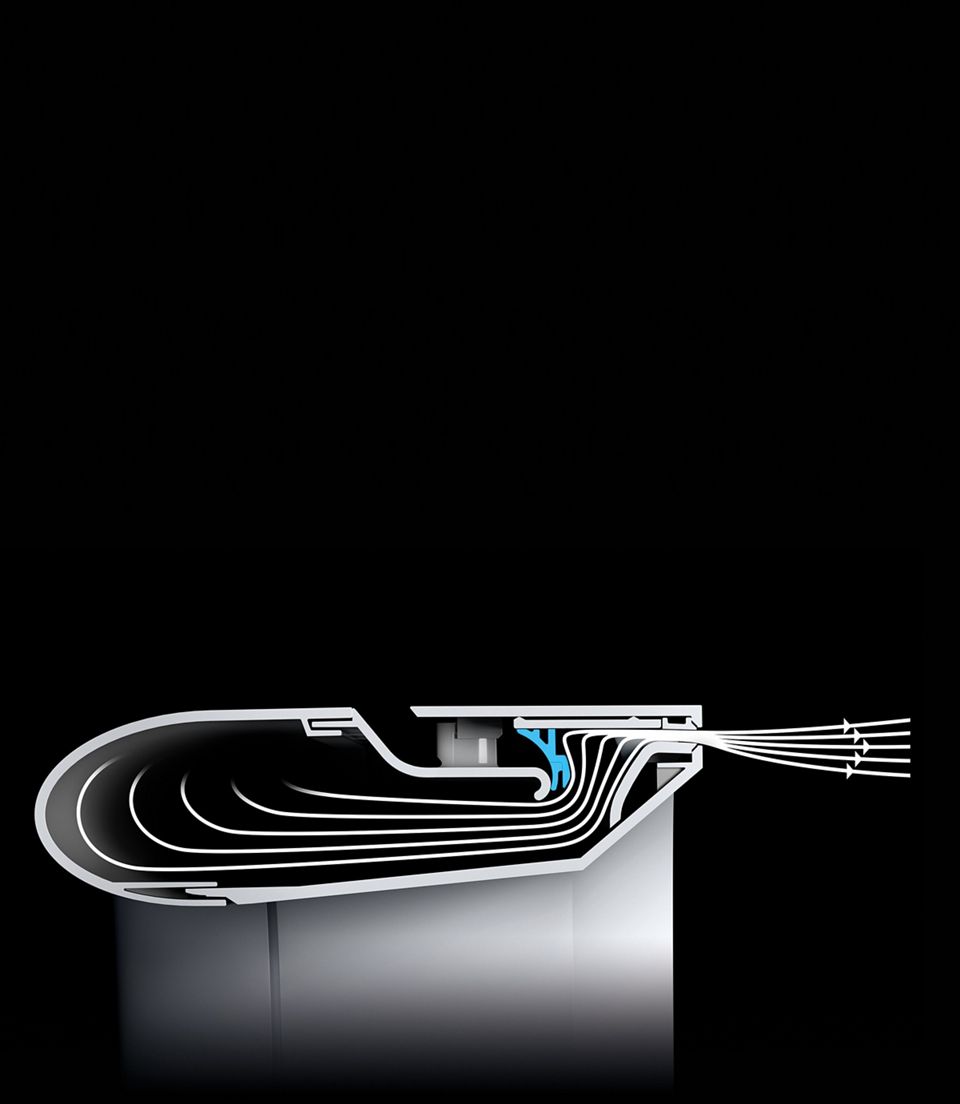
Diffused projection
The baffle moves to block the front aperture and diverts air through the rear of the annular at a 45° angle, creating a more diffused airflow. This uses less energy and is quieter because the aperture is wider. Purification effectiveness is still maintained, without the 'draught.'
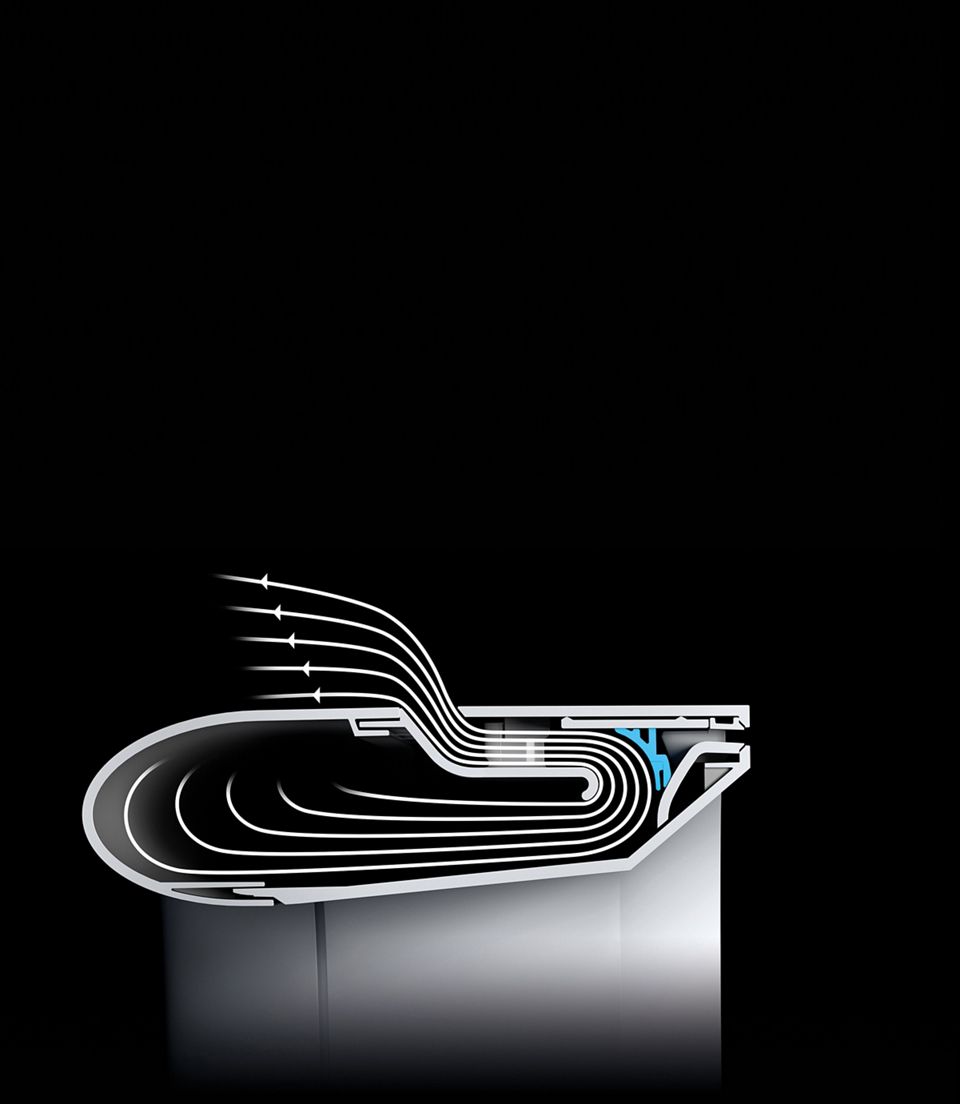
² In max setting.Tested to Dyson internal test method TM-003711 in a 27m2 room. 'Harmful' / 'Ultrafine' pollutants refers to airborne particles as small as 0.1 microns (tested to EN1822).